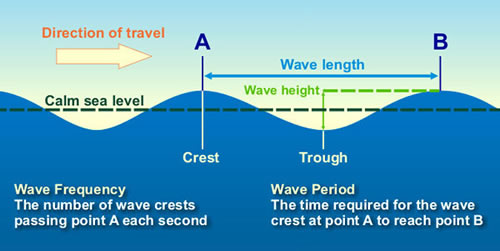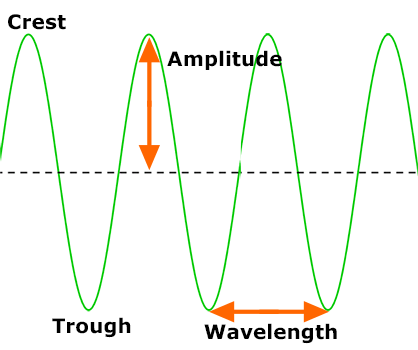Learn

Labeling a Wave
Different types of waves have different characteristics. What makes waves different from each other?
- The amount of energy the wave carries determines how fast the wave travels.
- The wavelength is dependent on the nature of the medium through which the wave travels.

Image courtesy of the US National Oceanic and Atmospheric Administration.

Transverse Waves
Parts of a transverse wave include:
- The wavelength is the distance between two consecutive waves.
- The crest is the highest point of the wave.
- The trough is the lowest part of the wave
- The frequency is the number of wave crests that pass a certain point each second.
- The period is the time required for the wave crest at a set point to reach another set point.


Longitudinal Wave
Parts of a longitudinal wave include:
- A compression is the denser area of the wave. In a spring or slinky it is the area where the coils are together more.
- A rarefaction is the less dense area of the wave. In a spring or slinky it is the area where the coils are spread out more.


Review
Read Categories of Waves from the Physics Classroom to learn more about these types of waves.
Be sure to:
- Watch the animations
- Try out the Simple Wave Simulator
- Complete Check Your Understanding questions

